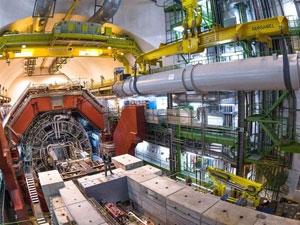
On the back of the discovery of the Higgs Boson, the European Organisation for Nuclear Research (CERN) is going temporarily offline in a bid to increase its capacity and explore unknown aspects of physics.
Professor Simon Connell, from the University of Johannesburg's School of Physics, says the experiment found a particle that is now considered to be a Higgs Boson, which could be either the missing piece of the Standard Model of Physics, a set of rules that outlines the fundamental building blocks of the universe, such as protons, electrons and atoms, or it could be one of several such Bosons leading to physics beyond the Standard Model.
Last July, scientists said two Switzerland-based research projects had discovered a Higgs-like particle. The July announcement came in a progress report from the LHC, the £2.6 billion "Big Bang" particle accelerator at the centre of the hunt for the Higgs Boson. The LHC has been dubbed the world's largest experiment and is housed at CERN, in Switzerland.
However, says Connell, some things that were expected have not shown up so far, such as dark matter candidate particles. As a result, the collider needs to go to full design energy and it is currently being modified to get there.
CERN says the CERN accelerator complex is in its first long shutdown and is undergoing a process called "consolidation", which means engineers and maintenance crews are repairing and strengthening accelerator components in preparation for running at higher energy in 2015.
As part of the shutdown, up to 18 superconducting magnets on the LHC will be replaced, including 15 dipole magnets three and quadrupole magnet assemblies. Quadrupole magnets help to focus the particles into a tight beam so they are more likely to collide in greater numbers as they reach the LHC detectors, says CERN.
Each quadrupole has four magnetic poles arranged symmetrically around the beam pipe to squeeze the beam either vertically or horizontally.
New era
Connell explains the LHC will ultimately go beyond initial design capacity and produce copious amounts of Higgses for study.
The Higgs particle - or boson - is named after Peter Higgs, who was one of six authors who theorised about the existence of the particle in the 1960s. It is commonly called the "God Particle", after the title of Nobel physicist Leon Lederman's "The God Particle: If the Universe Is the Answer, What Is the Question?" according to Wikipedia.
The experiment will run until 2030 and will be upgraded to 10 times its initial design specification, with the ability to collect 100 times more data, says Connell. In the two years of down time, scientists will develop analysis tools and analyse data, he adds.
Connell says more experiments are needed to select between theories and guide theoretical development to take physics beyond the standard model.
Share